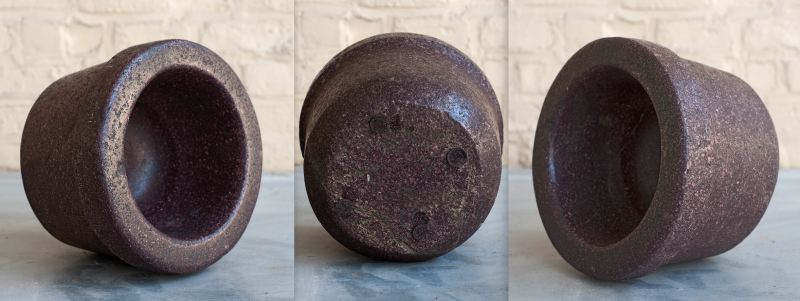You can use this form above to contact me or call / WhatsApp me at 0032495207546
A rare straight sided mortar in Royal Egyptian Porphyry. Height : 21 cm Diameter : 27 cm.
The object is Period Roman, IInd - IIIrd century CE, because of the model, the surface and other Roman comparanda dating from the Roman Period. The shape similar as a mortar found in Pompeii and as the Gladiator Cup now in the MET museum in New-York.
No other stone in Western Civilization has attained the same prestigious status as that of porphyry. It is a stone which embodied the power of Emperors and rulers since Antiquity, and from the end of the Roman Empire represented a means to legitimise and underline the power of any pretender to the throne. Of a deep purple color with flecks of white, the bullet hard volcanic stone was, according to Pliny’s Naturalis Historia, discovered by legionary Caius Cominius in the year 18 CE at a location now called Mons Porphyrites (Porphyry Mountain), in the eastern desert of Egypt. Romans gave the stone a name : “porphyry”, deriving from the Latin word for purple, the color of nobility. With exceptional strength and durability, its intrinsic qualities were perfectly suited to the message of power and authority, but also made it extremely hard to work and carve. Making objects in this hardstone was both political and an artistic statement. After the 5th century, the quarries ceased to be mined and Mons Porphyrites was lost in oblivion. Thereafter, the sole source for porphyry of this type used in Western Europe were ruins from Ancient Rome, imbuing the new works created with a deep spiritual connection to Antiquity.
